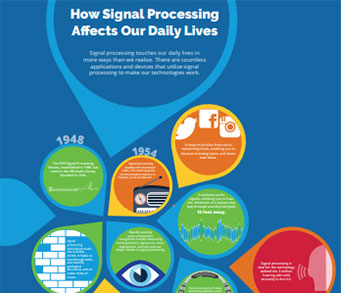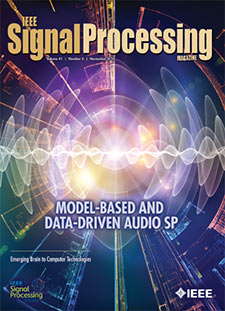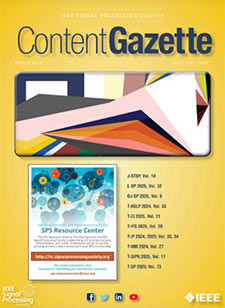- Our Story
- Publications & Resources
- Publications & Resources
- Publications
- IEEE Signal Processing Magazine
- IEEE Journal of Selected Topics in Signal Processing
- IEEE Signal Processing Letters
- IEEE Transactions on Computational Imaging
- IEEE Transactions on Image Processing
- IEEE Transactions on Information Forensics and Security
- IEEE Transactions on Multimedia
- IEEE Transactions on Signal and Information Processing over Networks
- IEEE Transactions on Signal Processing
- IEEE TCI
- IEEE TSIPN
- Data & Challenges
- Submit Manuscript
- Guidelines
- Information for Authors
- Special Issue Deadlines
- Overview Articles
- Top Accessed Articles
- SPS Newsletter
- SigPort
- SPS Resource Center
- Publications FAQ
- Blog
- News
- Dataset Papers
- Conferences & Events
- Community & Involvement
- Professional Development
- For Volunteers
- Information for Authors-OJSP
-
Home
ICASSP@50: A Recap [Conference Highlights]
Conversational Agents in the Era of Large Language Models
Conferences Events IEEE Signal Processing Magazine IEEE SPL Article IEEE TIFS Article IEEE TMM Article IEEE TSP Article Jobs in Signal Processing Lectures Machine Learning Seasonal Schools Signal Processing News SPM Article SPS Distinguished Lectures SPS Newsletter Article SPS Webinar SPS Webinars SPS Webinar Series Webinar webinars -
Our Story
What is Signal Processing?

The technology we use, and even rely on, in our everyday lives –computers, radios, video, cell phones – is enabled by signal processing. Learn More » -
Publications & Resources
-
SPS Resources
- Signal Processing Magazine The premier publication of the society.
- SPS Newsletter Monthly updates in Signal Processing
- SPS Resource Center Online library of tutorials, lectures, and presentations.
- SigPort Online repository for reports, papers, and more.
- SPS Feed The latest news, events, and more from the world of Signal Processing.
-
SPS Resources
-
Conferences & Events
-
Community & Involvement
-
Membership
- Join SPS The IEEE Signal Processing Magazine, Conference, Discounts, Awards, Collaborations, and more!
- Chapter Locator Find your local chapter and connect with fellow industry professionals, academics and students
- Women in Signal Processing Networking and engagement opportunities for women across signal processing disciplines
- Students Scholarships, conference discounts, travel grants, SP Cup, VIP Cup, 5-MICC
- Young Professionals Career development opportunities, networking
- Get Involved
-
Technical Committees
- Applied Signal Processing Systems
- Audio and Acoustic Signal Processing
- Bio Imaging and Signal Processing
- Computational Imaging
- Image Video and Multidimensional Signal Processing
- Information Forensics and Security
- Machine Learning for Signal Processing
- Multimedia Signal Processing
- Sensor Array and Multichannel
- Signal Processing for Communication and Networking
- Signal Processing Theory and Methods
- Speech and Language Processing
- Technical Working Groups
- More TC Resources
-
Membership
-
Professional Development
-
Professional Development
- Signal Processing Mentorship Academy (SigMA) Program
- Micro Mentoring Experience Program (MiME)
- Distinguished Lecturer Program
- Distinguished Lecturers
- Distinguished Lecturer Nominations
- Past Lecturers
- Distinguished Industry Speaker Program
- Distinguished Industry Speakers
- Distinguished Industry Speaker Nominations
- Industry Resources
- IEEE Training Materials
- Jobs in Signal Processing: IEEE Job Site
-
Career Resources
- SPS Education Program Educational content in signal processing and related fields.
- Distinguished Lecturer Program Chapters have access to educators and authors in the fields of Signal Processing
- Job Opportunities Signal Processing and Technical Committee specific job opportunities
- Job Submission Form Employers may submit opportunities in the area of Signal Processing.
-
Professional Development
-
For Volunteers
-
For Board & Committee Members
- Board Agenda/Minutes* Agendas, minutes and supporting documentation for Board and Committee Members
- SPS Directory* Directory of volunteers, society and division directory for Board and Committee Members.
- Membership Development Reports* Insight into the Society’s month-over-month and year-over-year growths and declines for Board and Committee Members
-
For Board & Committee Members
Popular Pages
Today's:
- Information for Authors
- (ICME 2026) 2026 IEEE International Conference on Multimedia and Expo
- IEEE Transactions on Information Forensics and Security
- IEEE Transactions on Image Processing
- (ASRU 2025) 2025 IEEE Automatic Speech Recognition and Understanding Workshop
- Access Restricted
- IEEE Transactions on Audio, Speech and Language Processing
- IEEE Transactions on Multimedia
- (ISBI 2026) 2026 IEEE 23rd International Symposium on Biomedical Imaging
- Submit a Manuscript
- Conference Call for Papers
- IEEE Journal of Selected Topics in Signal Processing
- Unified EDICS
- Signal Processing Cup
- Guidelines
All time:
- Information for Authors
- Submit a Manuscript
- IEEE Transactions on Image Processing
- IEEE Transactions on Information Forensics and Security
- IEEE Transactions on Multimedia
- IEEE Transactions on Audio, Speech and Language Processing
- IEEE Signal Processing Letters
- IEEE Transactions on Signal Processing
- Conferences & Events
- IEEE Journal of Selected Topics in Signal Processing
- Information for Authors-SPL
- Conference Call for Papers
- Signal Processing 101
- IEEE Signal Processing Magazine
- Guidelines
Last viewed:
- SPS Webinar: 15 February 2023, presented by Mr. Wei Liu, Dr. Li Chen and Dr. Wenyi Zhang
- SPS Scholarship Program
- IEEE Transactions on Audio, Speech and Language Processing
- Information for Authors
- (ASRU 2025) 2025 IEEE Automatic Speech Recognition and Understanding Workshop
- Distinguished Lecture: Akihiko (Ken) Sugiyama (Yahoo Japan Corporation, Japan)
- IEEE Journal of Selected Topics in Signal Processing
- Editorial Board
- Membership
- An Echo in Time: Tracing the Evolution of Beamforming Algorithms
- Postdoc position in large image dataset object recognition at University of Edinburgh
- Login Error
- Submit a Manuscript
- Submit a Proposal for ICASSP 2030
- (ISBI 2026) 2026 IEEE 23rd International Symposium on Biomedical Imaging
Das, Jnaneshwar (University of Southern California) “Data-driven Robotic Sampling for Marine Ecosystem Monitoring” (2014)
You are here
Newsletter Menu
Newsletter Categories
Top Reasons to Join SPS Today!
1. IEEE Signal Processing Magazine
2. Signal Processing Digital Library*
3. Inside Signal Processing Newsletter
4. SPS Resource Center
5. Career advancement & recognition
6. Discounts on conferences and publications
7. Professional networking
8. Communities for students, young professionals, and women
9. Volunteer opportunities
10. Coming soon! PDH/CEU credits
Click here to learn more.
News and Resources for Members of the IEEE Signal Processing Society
Das, Jnaneshwar (University of Southern California) “Data-driven Robotic Sampling for Marine Ecosystem Monitoring” (2014)
Das, Jnaneshwar (University of Southern California) “Data-driven Robotic Sampling for Marine Ecosystem Monitoring” Advisor: Sukhatme, Gaurav S. (2014)
Spontaneous emission into the lasing mode fundamentally limits laser linewidths. Reducing cavity losses provides two benefits to linewidth: (1) fewer excited carriers are needed to reach threshold, resulting in less phase-corrupting spontaneous emission into the laser mode, and (2) more photons are stored in the laser cavity, such that each individual spontaneous emission event disturbs the phase of the field less. Strong optical absorption in III-V materials causes high losses, preventing currently-available semiconductor lasers from achieving ultra-narrow linewidths. This absorption is a natural consequence of the compromise between efficient electrical and efficient optical performance in a semiconr laser. Some of the III-V layers must be heavily doped in order to funnel excited carriers into the active region, which has the side effect of making the material strongly absorbing.
This thesis presents a new technique, called modal engineering, to remove modal energy from the lossy region and store it in an adjacent low-loss material, thereby reducing overall optical absorption. A quantum mechanical analysis of modal engineering shows that modal gain and spontaneous emission rate into the laser mode are both proportional to the normalized intensity of that mode at the active region. If optical absorption near the active region dominates the total losses of the laser cavity, shifting modal energy from the lossy region to the low-loss region will reduce modal gain, total loss, and the spontaneous emission rate into the mode by the same factor, so that linewidth decreases while the threshold inversion remains constant. The total spontaneous emission rate into all other modes is unchanged.
Modal engineering is demonstrated using the Si/III-V platform, in which light is generated in the III-V material and stored in the low-loss silicon material. The silicon is patterned as a high-Q resonator to minimize all sources of loss. Fabricated lasers employing modal engineering to concentrate light in silicon demonstrate linewidths at least 5 times smaller than lasers without modal engineering at the same pump level above threshold, while maintaining the same thresholds.
For details, please visit the thesis page.
Open Calls
| Nomination/Position | Deadline |
|---|---|
| Call for Nominations for the SPS Chapter of the Year Award | 15 October 2025 |
| Call for Papers for 2026 LRAC Workshop | 22 October 2025 |
| Submit Your 2026 ICASSP Workshop Paper | 22 October 2025 |
| Submit a Proposal for ICASSP 2030 | 31 October 2025 |
| Call for Project Proposals: IEEE SPS SigMA Program - Signal Processing Mentorship Academy | 2 November 2025 |
| Submit Your Proposals for 2026 Member-Driven Initiatives | 21 November 2025 |
| IEEE Signal Processing Society Annual Election Opens on 17 October | 4 December 2025 |
Society News
- Call for Participation: IEEE Signal Processing Cup 2015
- GlobalSIP 2015: Call for Symposium Proposals
- Video of the month: What is Signal Processing?
- Member in the spotlight: Ercan E. Kuruoglu
- Upcoming IEEE Webinars and Training for Conference Organizers
- Mentor Students in the IEEE Spark Innovation through Animation Competition!
- Nominate an IEEE Fellow today!
- New Committee Chairs for 2014
- Upcoming Distinguished Lectures – November 2014
Conferences & Events
Research Opportunities
Publications News
Technical Committee News
SPS Social Media
- IEEE SPS Facebook Page https://www.facebook.com/ieeeSPS
- IEEE SPS X Page https://x.com/IEEEsps
- IEEE SPS Instagram Page https://www.instagram.com/ieeesps/?hl=en
- IEEE SPS LinkedIn Page https://www.linkedin.com/company/ieeesps/
- IEEE SPS YouTube Channel https://www.youtube.com/ieeeSPS
Home | Sitemap | Contact | Accessibility | Nondiscrimination Policy | IEEE Ethics Reporting | IEEE Privacy Policy | Terms | Feedback
© Copyright 2025 IEEE - All rights reserved. Use of this website signifies your agreement to the IEEE Terms and Conditions.
A public charity, IEEE is the world's largest technical professional organization dedicated to advancing technology for the benefit of humanity.








